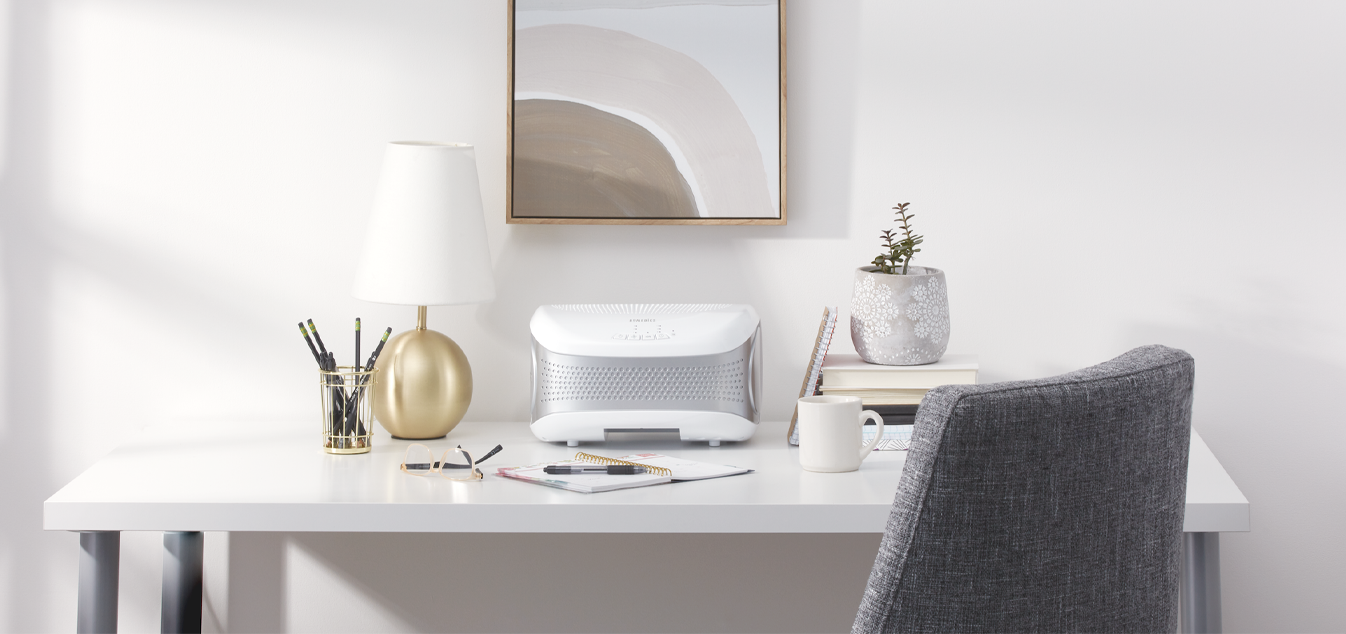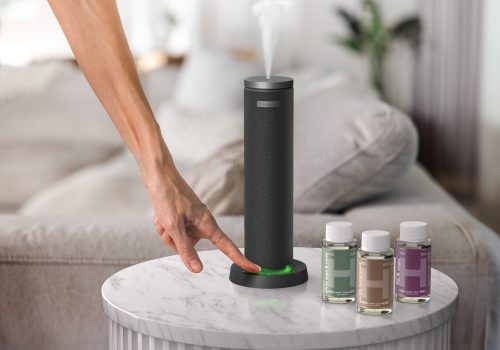Tips for Staying Healthy While Working from Home
Over the past year, many of us have turned our homes into offices. Our computers are always there looming over us as they beg us to check our email or finish a project over the weekend. The boundary lines of work life and personal life have been blurred, making stress levels and tension skyrocket (and our motivation levels deplete). The place that once offered a barrier from all things work has been infiltrated with conference calls and spreadsheets. It’s time to take our wellness havens back, create space for ourselves to log off, and find new ways to relax when work is always a click away.
While our new home offices aren’t the only stressful factors from the past year (hello, global pandemic), constantly being connected to work has definitely contributed, so we’ve created a guide for living your well and relaxing while working from home.
WFH TIPS
STICK TO YOUR SLEEP ROUTINE
From the fatigue of living through a pandemic, doom scrolling on social media, virtual meetings, and trying to adjust your schedule to the new normal, you’ve likely been feeling extra tired this year. The Mayo Clinic states that extra stress, screen time, and less social interaction can contribute to insomnia and a tired feeling. You can help get your sleep back on track by going to bed at the same time every night, getting 7 to 9 hours of solid sleep, and practicing meditation, which has been shown to improve sleep, reduce stress, and lessen your levels of fatigue. If you’re having trouble getting asleep or staying asleep, a sound machine or a humidifier with aromatherapy features are inexpensive solutions that may be just what you need.
FIND TIME TO MOVE YOUR BODY

On top of getting better sleep, finding time to move your body throughout the workday can be beneficial. Whether you’re riding a bike, going for a stroll around your neighborhood, or doing a full-body workout at lunch, getting a change of scenery and increasing endorphins can give your mood a boost.
INCORPORATE MASSAGE
According to the Mayo Clinic, massage offers many health benefits from reducing stress, pain, muscle soreness, circulation, and lowering your heart rate and blood pressure. They also note that massage has been proven to minimize headaches, nerve pain, back and neck pain. While it has been difficult to create a consistent schedule with a massage therapist over the past year, right now we need massage more than ever. Thankfully, according to Healthline, there are a few types of stress-relieving massage that can be done from the comfort of your home with handheld massagers.
Shiatsu Massage: This deep-kneading technique can be done by a massage therapist or handheld massagers. It promotes emotional and physical calmness, reduces muscle tension, and helps relieve stress.
Deep Tissue Massage: This type of massage can help with muscle tension caused by stress.
Aromatherapy Massage: Using aromatherapy with massage can be helpful for people with stress since awakening your senses has been shown to boost your mood.
CREATE A WFH HAVEN
Creating a comfortable, positive, and work-friendly space is important when working from home. Dr. Bang from the Cleveland Clinic states that there are four areas to focus on when setting up your desk:
Head: Keep your head and spine in a neutral position, make sure your computer screen is directly in front of where your eyes are primarily looking. If you have a secondary screen, don’t keep it in the same place for too long. Change the location every few weeks by moving it from the right or left of your primary computer.
Arms: Your arms should be at 90 degrees, your shoulders should be relaxed and away from your ears, and your elbows should be bent with neutral wrists. You should use an ergonomic mouse rather than a traditional mouse, if possible, to help avoid carpal tunnel syndrome.
Back: Not everyone has access to an ergonomic desk chair, but there are a few ways to support your back in a traditional chair. Keep your legs and thighs parallel to your seat. You can use a box or stool to rest your feet so you stay in this position if your feet don’t touch the ground. Place a pillow at the small of your back to allow your back to naturally adjust so your head is over your neck and shoulders rather than leaning forward.
Movement: You don’t want to stay in the same place for too long (even if your desk is ergonomically correct), so set a timer to get up and move every 45 minutes to an hour. You can even stretch from your desk while reading your emails or in a camera-free virtual meeting.
Other ways to create a positive home office setting are to set up your desk in a well-lit area of your home, add plants to your space (gardening and connecting to nature have been found to boost moods!), and find a place that offers privacy from your significant other, kids, or roommates to reduce stress levels while working.
MENTAL BREAK
When working from home, it’s easy to forget to take a 15-minute break or a lunch, but it’s also important to give yourself a mental break from your screen. Whether you’re stepping away to mediate for 5 minutes, taking a stroll around the block, or doing a short breathing exercise, empower yourself to step away to take care of yourself.Setting weekly intentions, planning for your week ahead of time, and communicating your schedule with your roommates, family, and coworkers can help you dedicate time for your mental break.
●Limit your screens when you’re not working: Create a schedule for watching TV, scrolling social media, and even FaceTiming with your friends and family. It’s important to have boundaries, especially with your screens since they can affect your sleep schedule so much.
●Practice Gratitude: Create a wellness journal and write down everything you’re grateful for. A study done by UC Davis found that grateful people sleep better and have more mental and physical energy throughout the day (which we need for work!).
●Create a De-Stress Plan: We’re all going to be stressed at least once this week, so create a plan for when that happens. Write down a list of things that help shift your mood to a more positive state, whether you remind yourself to take a walk, meditate for 5 minutes, or stretch. It’s important to be prepared since we can’t always think clearly in stressful moments.
Medical Disclaimer: This content is provided for informational purposes only and not intended to be a substitute for professional medical advice, diagnosis or treatment.
SOURCES
MASSAGE: GET IN TOUCH WITH ITS MANY BENEFITS, MAYO CLINIC: https://www.mayoclinic.org/healthy-lifestyle/stress-management/in-depth/massage/art-20045743
Mayo Clinic Q and A: Staying healthy while teleworking, News Network: https://newsnetwork.mayoclinic.org/discussion/mayo-clinic-q-and-a-staying-healthy-while-teleworking/
Here’s How to Set Up an Ergonomic Home Office to Avoid Aches & Pains, Cleveland Clinic: https://health.clevelandclinic.org/heres-how-to-set-up-your-office-to-avoid-aches-pain/
Gratitude is Good Medicine, UC Davis: https://health.ucdavis.edu/medicalcenter/features/2015-2016/11/20151125_gratitude.html
What Are the Different Types of Massage, Healthline: https://www.healthline.com/health/types-of-massage





